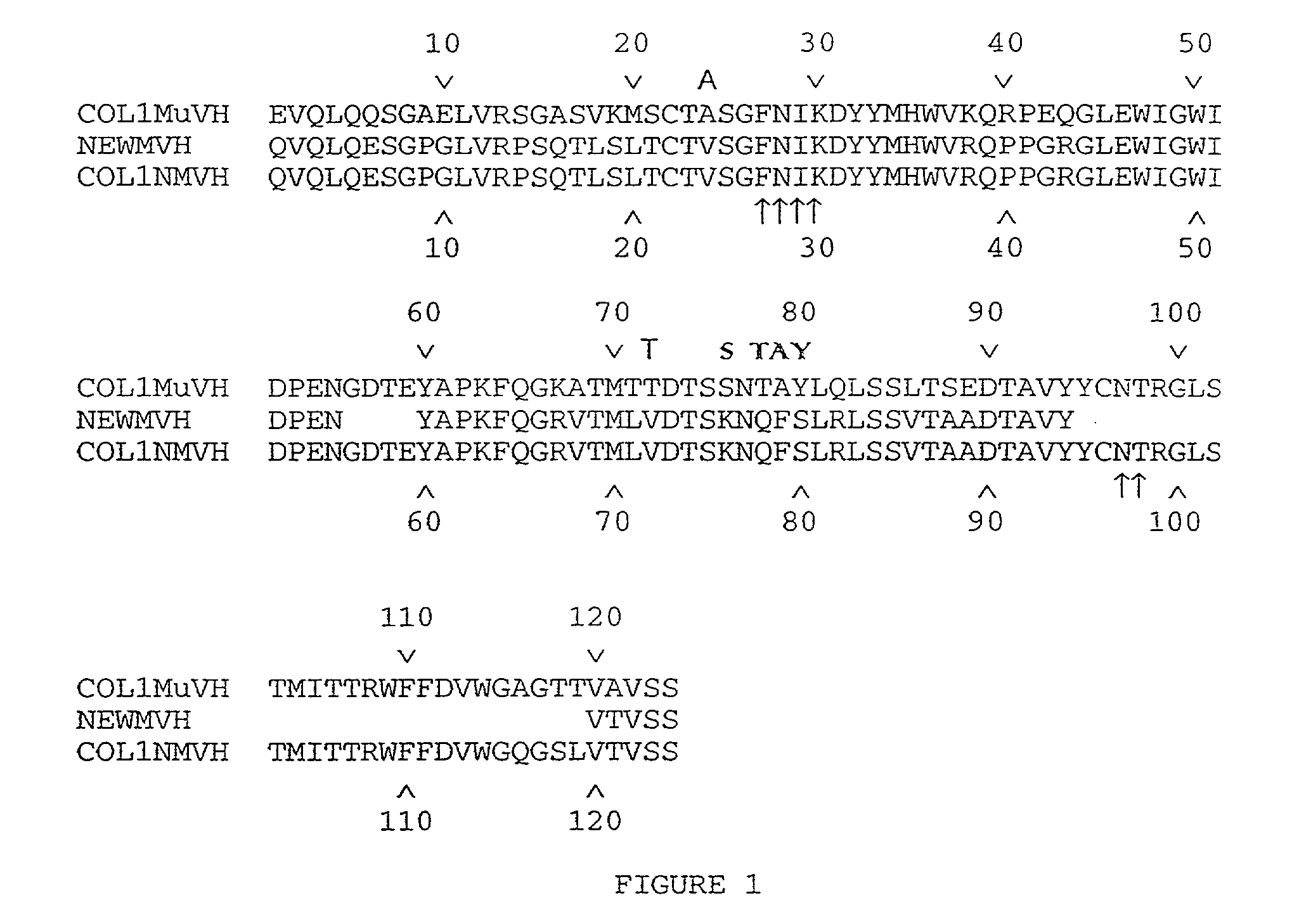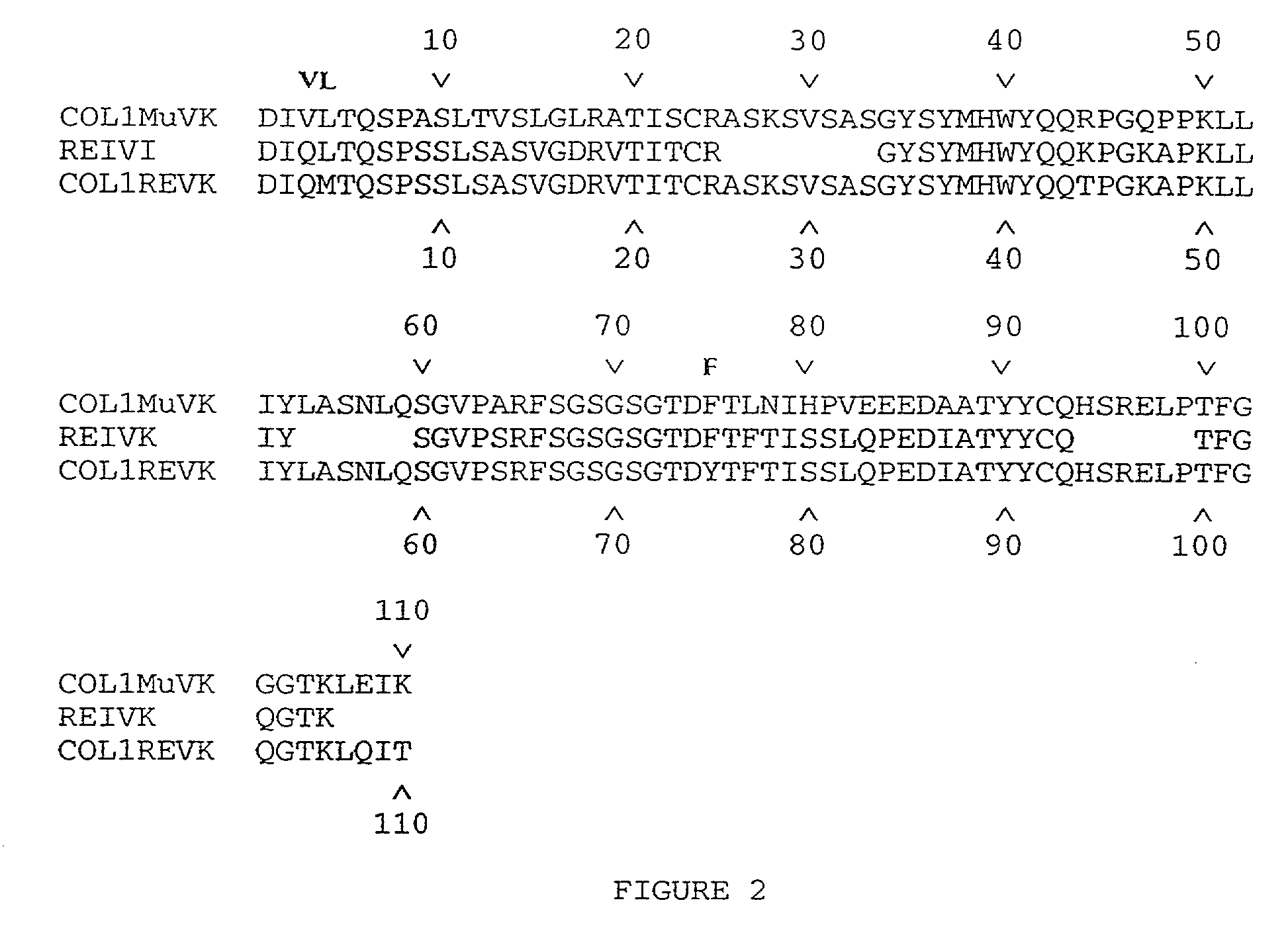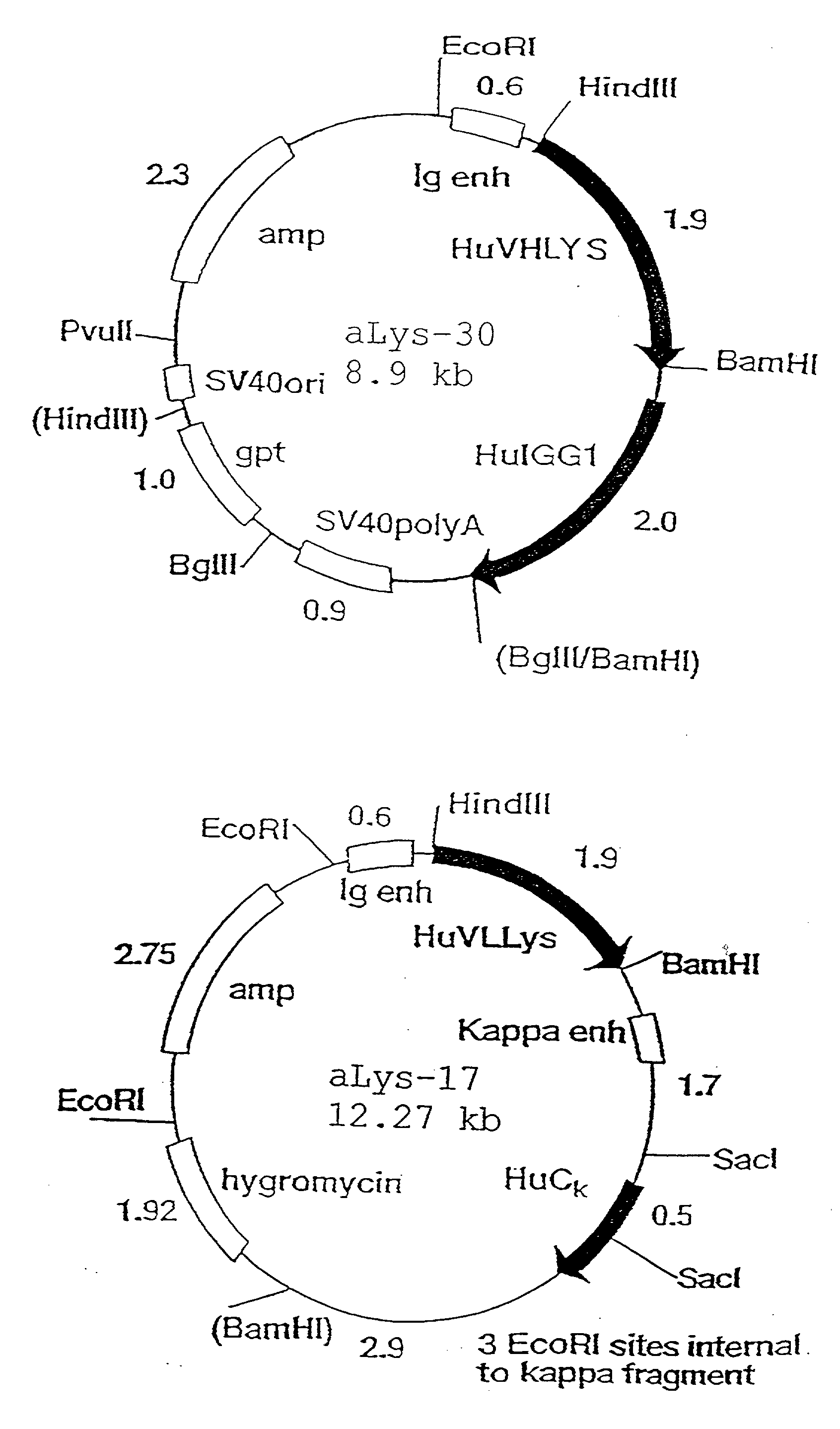High affinity humanized anit-cea monoclonal antibodies
a humanized anitcea and monoclonal antibody technology, applied in the field of high affinity humanized anitcea monoclonal antibodies, can solve the problems of neutralizing antibody response, anti-murine antibody response (hama) response, and disadvantage in some respects, and achieve the effect of lessening the complications of excision
- Summary
- Abstract
- Description
- Claims
- Application Information
AI Technical Summary
Benefits of technology
Problems solved by technology
Method used
Image
Examples
example 1
[0184] Synthesis of Initial CDR-Grafted (Humanized) Antibody from Murine COL-1
[0185] We describe in this Example the construction of humanized COL-1 Mabs (COL-1 HuVH / HuVK) using the VL and VH frameworks of human Mabs REI and NEWM, respectively. The CDRs for murine COL-1 were grafted onto human frame-works according to known methods as discussed supra. In particular, human frameworks were selected from antibodies which, based on previous studies, were predicted to be suitable, i.e. which should not adversely affect antigen binding and not exhibit significant immunogenicity in humans. The human frameworks selected for the variable heavy and variable light chains, respectively, were NEWM and REI.
[0186] In the production of the initial version of the humanized VH, certain murine framework residues were also retained which, based on previous studies, might allow retention of antigen binding properties. Specifically, residues F27, N28, 129, K30, N97,and T98 of the murine heavy chain were ...
PUM
| Property | Measurement | Unit |
|---|---|---|
| volume | aaaaa | aaaaa |
| volume | aaaaa | aaaaa |
| volume | aaaaa | aaaaa |
Abstract
Description
Claims
Application Information
 Login to View More
Login to View More - R&D
- Intellectual Property
- Life Sciences
- Materials
- Tech Scout
- Unparalleled Data Quality
- Higher Quality Content
- 60% Fewer Hallucinations
Browse by: Latest US Patents, China's latest patents, Technical Efficacy Thesaurus, Application Domain, Technology Topic, Popular Technical Reports.
© 2025 PatSnap. All rights reserved.Legal|Privacy policy|Modern Slavery Act Transparency Statement|Sitemap|About US| Contact US: help@patsnap.com



